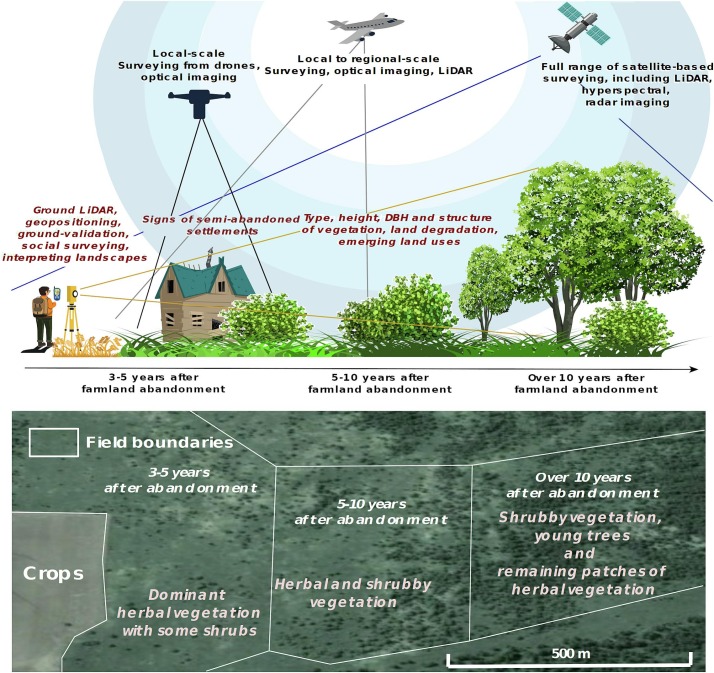Recently published in the high-impact journal Remote Sensing of Environment, “The progress and potential directions in the remote sensing of farmland abandonment” showcases the power of cross-project collaboration — including Europe-LAND’s partner team at Charles University (Czech Republic).
Although urban expansion and the growing demand for agricultural production are intensifying pressure on land use, farmland abandonment has paradoxically been emerging as a widespread land-use change phenomenon worldwide. This review synthesized 131 publications to assess how remote sensing has been used to monitor abandonment. It highlights the rapid growth of these techniques, while revealing an ongoing reliance on publicly available optical data such as Landsat and Sentinel-2.
The article makes a conceptual contribution to one of Europe-LAND’s future outputs — the development of indicators of LU/LC transition processes. Because Europe-LAND’s indicators will be grounded in remote sensing, this synthesis provides a critical evidence base for designing robust, scalable metrics to track abandonment and other land-use transitions.
The paper was co-authored by experts from the University of Copenhagen (Denmark), Heidelberg University (Germany), Slovak Academy of Sciences (Slovakia), Swiss Federal Institute for Forest, Snow and Landscape Research (Switzerland), Charles University (Czech Republic), and the University of Warsaw (Poland). Support came from leading programs such as 4EU+ Flagship: Biodiversity and Sustainable Development Program, Biodiversa+, and ALPMEMA, illustrating the strength of international, cross-project cooperation.
Among its recommendations are:
• expanding research to underrepresented land-use types (grasslands, terraces, plantations)
• extending coverage to regions such as Africa, Central and Southeast Asia, and South America
• diversifying data sources beyond optical imagery
• integrating ancillary information and socio-economic contexts
• and improving communication of methods, definitions, and results
Together, these directions will enable Europe-LAND and partners to develop next-generation indicators that track farmland abandonment more accurately, support evidence-based decision making, and inform sustainable land-use policies across Europe.
Access the full article here: https://doi.org/10.1016/j.ecolind.2025.113869

